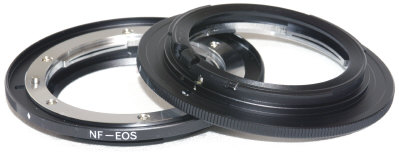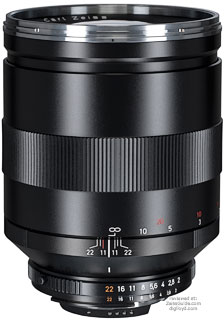Reader Asks: What to do About Lenses if one has Both Nikon and Canon Systems?

Reader Christopher E writes:
I have enjoyed your writing as a subscriber for several years now.
I am an advanced amateur with both Nikon D800E and Canon 5DMkIII systems. I try to use Zeiss lenses for most of my photography to maintain a uniform look. This includes the ZF, ZF.2 and ZE series as well as Conurus converted 24-85, 100mm Makro Planar and 85mm Contax N lenses. My favorite lenses I have as both ZE and ZF/ZF.2 versions (21mm, 35mm/f2, 50mm/f2).
 Zeiss 135mm f/2 APO-Sonnar
Zeiss 135mm f/2 APO-SonnarRegarding the new 135mm APO lens, I will have it in my hands shortly as a ZF.2 version and am hesitant to continue investing in both versions. I know I will use it mostly for serious landscape shots on a tripod, currently with the D800E.
My thought for the future is, would you use a high quality N-EOS converter (if so, which one), or change the mount using a Leitax kit down the road when Nikon's sensor is eclipsed by Canon? I am afraid that any geometric misalignment will show.
How precise are the Leitax mounts compared with the best adapters? I am trying to avoid buying future Zeiss lenses in duplicate. Perhaps sometime in the future I can finally make a decision on one DSLR camera system (probably Canon), but for now Nikon offers something Canon does not and the difference is currently very large for landscape type applications.
Regarding Sony, will you perhaps someday test the autofocus Zeiss lenses of that system? There is very little information available on those lenses and an objective test of your quality would be very welcome.
DIGLLOYD: At present, Nikon rocks with its D800 resolution, dynamic range, low noise, and color quality, with a 56-megapixel D4x rumored for this year.
But Canon will respond, and the two will continue to trade places. The game will result in resolution in the 50-80 megapixel range, but ultimately must move towards a true-color sensor (though probably done differently than the Sigma/Foveon X3 sensor, probably 3-way color splitter approach for each pixel).
Finally, both camps are entirely clueless about real innovation, so maybe Sony will eat their lunch, though Sony is clueless about the pro market and seems to think all cameras are just another consumer product (rather than working tools). But Sony is learning fast, the RX100 and RX1 showing hints of greatness. If only Sony could involve pro photographers in the design process and skip the tacky branding crap on the cameras. But heck, even Nikon can’t stop making truly stupid design mistakes.
Lens adapters
As far as lens adapters, I prefer the CameraQuest.com ones, which have served me reliably for years (for years I shot Nikon lenses on Canon DSLRs). Novoflex is also very good. I’ve had ugly luck with cut-price brands (paint made to look anodized flaking off into camera throat, a lens adapter that had to be destructively cut off to free the lens, a lens falling off because adapter would not lock). I avoid certain brands like the plague.
As far as using a lens adapter to mate the Zeiss ZF.2 135mm f/2 APO-Sonnar to a Canon body, I would discourage this idea— the lens is already heavy. Adding a lens adapter adds two mating surfaces each of which is subject to sag (even 0.1mm is a BIG deal). It might be satisfactory, but I’m not going there myself. However, for the 21/2.8, 50/2: these should be just fine.
A manual lens adapter also means totally manual operation of the lens aperture/diaphragm and no recorded EXIF info. Manual operation can actually be a plus (video work, methodical tripod work), but for all around shooting it’s a hassle.
Leitax conversion
Leitax: flat with no skew in my experience (Leica 100/2.8 APO, 180/2.8 APO, 90/2 APO), but there is individual lens variance in flange focal distance, which means infinity focus can be an issue. For example, my Leica 90/2 APO-Summicron-R would not focus past 15 feet or so after Leitax conversion (Leitax offered swap for one for my particular lens if I could measure very precisely, but I did not have the tool for it). Other Leitax conversions have worked fine, particularly for APO lenses that focus “past infinity”.
Sony/Zeiss
As for Sony/Zeiss lenses for Sony DSLRs: I reviewed the Sony A900 and lenses back in 2008, but demand is just about nil (hardly any pros or serious shooters choose Sony, these are my main customers). Just makes no business sense for me, at least not at present.



























